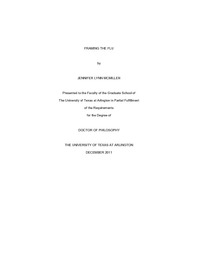
ATTENTION: The works hosted here are being migrated to a new repository that will consolidate resources, improve discoverability, and better show UTA's research impact on the global community. We will update authors as the migration progresses. Please see MavMatrix for more information.
Show simple item record
| dc.contributor.author | McMillen, Jennifer Lynn | en_US |
| dc.date.accessioned | 2012-04-11T20:59:29Z | |
| dc.date.available | 2012-04-11T20:59:29Z | |
| dc.date.issued | 2012-04-11 | |
| dc.date.submitted | January 2011 | en_US |
| dc.identifier.other | DISS-11487 | en_US |
| dc.identifier.uri | http://hdl.handle.net/10106/9639 | |
| dc.description.abstract | Since Tversky and Kahneman's article on prospect theory in 1979, there have been many articles published on framing with mixed success in finding preference shifts and in which frame subjects are most persuaded. Framing has been a source of much research and debate in extant literature, regarding whether the effect even exists and if it does, what accentuates or mitigates the effects found. Using the flu as the context, this article incorporates sad versus happy moods and emotional versus rational appeals to highlight when the most persuasive frame changes and to provide practitioners a more complete picture on the most persuasive ways to frame health-related messages. The first study looks at the interaction between frame and appeal type, and support is found for the hypothesis that higher attitudes and behavioral intentions are found in the positive frame with a rational appeal and in the negative frame with an emotional appeal. In the second study, the interaction between frame and mood is examined and support is found for the hypothesis that attitudes and behavioral intentions are higher in the positive frame when subjects are primed with a positive mood and in the negative frame when primed with a negative mood. | en_US |
| dc.description.sponsorship | Khare, Adwait | en_US |
| dc.language.iso | en | en_US |
| dc.publisher | Marketing | en_US |
| dc.title | Framing The Flu | en_US |
| dc.type | Ph.D. | en_US |
| dc.contributor.committeeChair | Khare, Adwait | en_US |
| dc.degree.department | Marketing | en_US |
| dc.degree.discipline | Marketing | en_US |
| dc.degree.grantor | University of Texas at Arlington | en_US |
| dc.degree.level | doctoral | en_US |
| dc.degree.name | Ph.D. | en_US |
Files in this item
- Name:
- McMillen_uta_2502D_11487.pdf
- Size:
- 318.7Kb
- Format:
- PDF
This item appears in the following Collection(s)
Show simple item record


